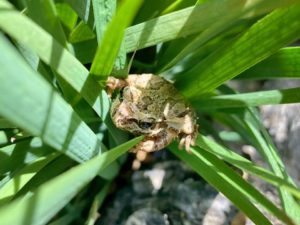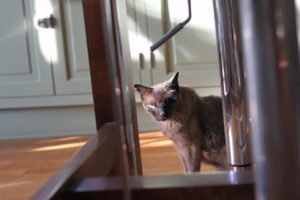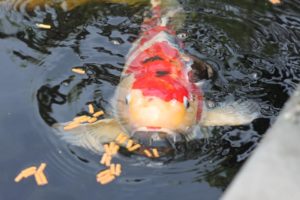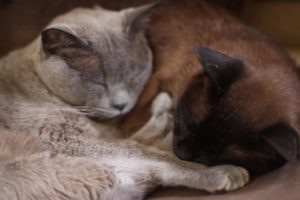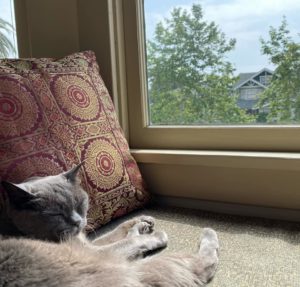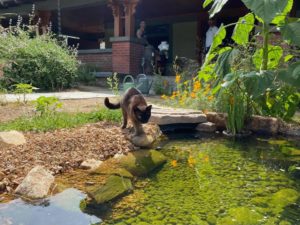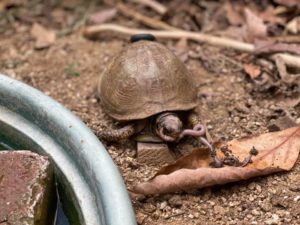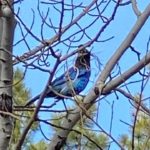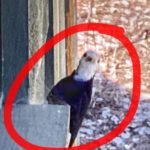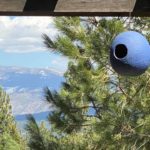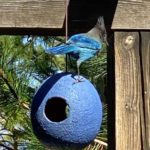A short fictional account, inspired by a true story from “Pit Bulls and Parolees”
On a July afternoon in 1993, Emily’s parents made the fateful decision to take their eyes off their daughter just as a 95-pound pit bull, easily four times her size, lunged at her stroller. The sleek grey dog, all muscle and mouth, was already on top of the stroller with its enormous head covering Emily’s face when her parents turned around. By the time the owner managed to pull the dog back, it was too late. Emily had been licked. She wheeled around to look at the culprit trotting away, and the culprit looked right back—his wet tongue still dangling from his pink mouth. Emily squealed.
There was 80-pound Poncho and 102-pound Scout and then Ginger with the big white paws who really broke Emily’s heart, which Treason very much helped to heal, before Emily left home and pursued her veterinary career. She loved all dogs but she was fascinated by pit bulls because of the strong bonds they formed with their owners; she also saw first-hand the struggles of finding them homes. Emily believed that by carefully observing and listening to dogs we can understand what they are communicating and learn how best to care for them. She built a successful practice in New Orleans on this philosophy. But there was one dog that Emily would never forget, because he reminded her that even the most highly skilled caretakers cannot always make sense of a dog’s behaviors.
Domino bounced from shelter to shelter in New Orleans as a puppy until he finally found Lacy. Described as a “terrier mix,” Domino was all pit bull in appearance with brown eyes and black and white fur covering his pudgy body. Lacy and Domino were immediately connected and spent seven years together. As Domino reached his eighth birthday, things had changed. There were fewer walks, fewer cuddles, and almost no visitors to sniff. Lacy confused Domino by laying motionless for hours until one night in a haze of lights and noises Lacy was gone and Domino found himself loose on the streets. After more than a year looking for his home and fending for himself, Domino was caught and behind bars again, this time at a shelter that specialized in pit bull rescues.
The shelter gave Domino almost five months but still could not figure him out. He came with no history. He was going blind. He showed injuries, maybe from the streets or maybe from abuse. And he was aggressive—very aggressive. He barked and snapped uncontrollably when people approached. He could not be trusted outside a pen without multiple handlers. They tried everything but the decision to have a vet euthanize him was necessary to make space and resources available for another dog.
The handlers took Domino (they called him Siren) to the vet. That vet was Emily. When the handlers brought Siren into the examination room, Emily recognized him immediately as Domino, a gentle pit bull patient of hers for years. But this was a different dog. He was out of control, showed signs of physical trauma, and was going blind. Emily went straight to her files and made a call, to no avail. And then another call and another, until Lacy was on the line. Emily explained the situation and Lacy frantically told her what happened, her heroine addiction, her overdose, losing Domino, months in recovery, and then a year heartbroken unable to find him.
Lacy hardly remembers driving to the veterinary office that morning though she would never forget the moment Domino recognized her—his feet dangling above the floor, paws gripping shoulders, desperate to lick Lacy’s face. It was Emily, though, who broke down in tears. She now understood what had happened, and what almost happened. No one could have known that Domino’s aggression was his way of trying to communicate his predicament. I have someone. I have to find her. You have to let me go. She needs my help. Having found Lacy, the handlers were no longer needed.
This story could end on any one of the many evenings Lacy and Domino sat enjoying the outdoors in their neighborhood park. On this particular October night they had the park to themselves, the only ones willing to brave a chill in the air. Unbeknownst to Lacy, Domino was now fully blind. He was leaning against her. She was thinking as she often did about how her recovery had brought hope and peace, and Domino, back into her life. She then turned to look at him and noticed his head bobbing up and down in the breeze, his eyes shut, his mouth open in that unmistakable pit bull smile. Domino was possessed of a magical power—the magical power of all dogs—to experience the world in the full spectrum of its brilliance using only his snout.
****Postscript****
In contemplating this story, I learned of another pit bull story about a dog that had been abused and tortured by its owners. They set him on fire, cut off part of his genitals, shot him three times, and then left him for dead in a field. But here’s the thing. This pit bull was found. He was treated and made a full recovery. With a caring owner, this gentle dog now lives the life of most pit bulls, relishing the affection of humans and looking for love in all passersby—even though he has every reason to mistrust and fear them.
